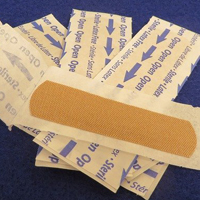Il consenso nel wound care: analisi della giurisprudenza e proposta di un modello per singolo trattamento

Ricevuto: 19 febbraio 2020
Accettato: 24 luglio 2020
Published: 26 gennaio 2021
Accettato: 24 luglio 2020
Abstract Views: 642
PDF: 308
PDF (English): 100
Consenso - modulo: 0
PDF (English): 100
Consenso - modulo: 0
Publisher's note
All claims expressed in this article are solely those of the authors and do not necessarily represent those of their affiliated organizations, or those of the publisher, the editors and the reviewers. Any product that may be evaluated in this article or claim that may be made by its manufacturer is not guaranteed or endorsed by the publisher.
All claims expressed in this article are solely those of the authors and do not necessarily represent those of their affiliated organizations, or those of the publisher, the editors and the reviewers. Any product that may be evaluated in this article or claim that may be made by its manufacturer is not guaranteed or endorsed by the publisher.
Articoli simili
- Michela Crisci, Giovanni Lepore, Federica Feleppa, Alessandro Crisci, Fabiana Flagiello, Analisi citomorfologica di fibrina ricca di piastrine liquida prodotta con centrifuga ad angolo fisso DUO (Process, Francia) per l’uso nella terapia rigenerativa delle ulcere cutanee , Italian Journal of Wound Care: V. 7 N. 3 (2023)
- Giovanni Petracca, Francesco Zappia, Giuseppe Maccarone , Fascite necrotizzante: caso clinico , Italian Journal of Wound Care: V. 5 N. 2 (2021)
- Elia Ricci, Monica Pittarello, Valutazione clinica dell’efficacia e della tollerabilità di un nuovo presidio a base di Rigenase® e poliesanide nel trattamento di lesioni cutanee croniche , Italian Journal of Wound Care: V. 6 N. 2 (2022)
Puoi anche Iniziare una ricerca avanzata di similarità per questo articolo.



 https://doi.org/10.4081/ijwc.2020.59
https://doi.org/10.4081/ijwc.2020.59





